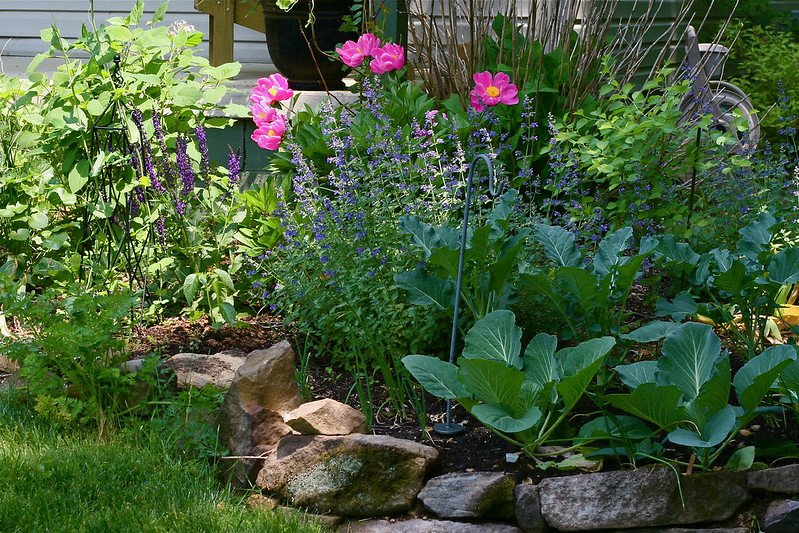Imagine strolling through a garden that isn’t just bursting with color, but also with unique flavors you can pluck and taste. Edible flower gardens combine beauty and functionality, giving you a lively outdoor space that offers culinary delights too! Let’s break down the basics of how to design edible flower garden that’s satisfying to look and eat from.
Why Design Edible Flower Garden?
The magic of an edible flower garden is that it doesn’t just beautify your space but also serves up ingredients to elevate your meals. Freshly picked flowers can bring surprising flavors to salads, soups, drinks, and desserts. Plus, edible flowers like borage and lavender attract pollinators, which makes your garden a friendlier spot for bees and butterflies.
If you’re a food lover, a gardener, or both, an edible flower garden offers a fresh (and tasty) twist on traditional garden spaces.
Choosing Edible Flowers that Pack Color and Flavor
Edible flower gardens are about balance – choosing flowers that look beautiful but also taste great. Here are some favorites that are easy to grow and versatile in the kitchen:
- Nasturtiums – These are peppery and slightly spicy, which makes them a great addition to salads and sandwiches. The bold orange, yellow, and red blooms create a striking display, especially if you’re a fan of fiery colors.
- Calendula – Also known as “poor man’s saffron,” calendula petals have a mildly peppery, somewhat tangy flavor. The bright orange and yellow petals can add both color and flavor to soups and rice dishes.
- Borage – The blue, star-shaped borage flowers bring a fresh, cucumber-like taste, which is fantastic in salads, chilled soups, and cocktails. Borage is also great for attracting bees!
- Violas and Pansies – Delicate and mild in flavor, these small blooms add a sophisticated touch to desserts, salads, and cakes. Their soft, cheerful appearance makes them popular for garnishing.
- Lavender – With its sweet floral scent, lavender is ideal for baking. It pairs especially well with lemon and honey, and the subtle fragrance elevates everything from scones to ice cream.
- Chive Blossoms – These little purple-pink flowers add a hint of onion flavor to savory dishes, salads, and dips. They’re perfect for when you want a light, oniony kick without overpowering a dish.
- Rose Petals – Choose fragrant varieties, as these tend to have the most flavor. Roses add an elegant, slightly fruity note to jams, desserts, and even herbal teas.
Remember to confirm that each flower is edible and free of pesticides before you plant and consume them. Some flowers may look edible but aren’t safe to eat, so a little research goes a long way!
How to Design Edible Flower Garden that’s Functional and Beautiful
Once you know which flowers you want, it’s time to think about the design of an edible flower garden. Here are a few simple tips to get the layout just right:
1. Create Visual Layers
Arrange your flowers by height, with the tallest (like borage) towards the back of your garden beds and shorter ones (like nasturtiums) in front. This helps create depth and ensures all flowers are visible.
Group flowers with complementary colors together for a harmonious look, or create vibrant contrasts to bring out each flower’s unique colors.
2. Companion Planting
Pair edible flowers with vegetables and herbs. For instance, nasturtiums not only look great but also deter pests, making them ideal partners for tomatoes or cucumbers. Chives can be planted near carrots or other root vegetables to help repel harmful insects.
3. Use Containers if Space is Tight
Even a small balcony or patio can host a beautiful edible flower garden. Try planting calendula, pansies, or violas in containers. Not only can you arrange pots to create your own little “garden,” but they’re also easy to move around if you want to change the layout or follow the sun.
4. Pathways and Borders
If you’re planting directly in the ground, consider edging pathways with flowers like chives or marigolds. This gives the garden a neat, inviting look, with accessible spots for harvesting.
Harvesting and Enjoying Your Edible Blooms
Once your flowers are blooming, the real treat is getting to harvest and use them! Cut flowers in the morning when they’re the freshest, and use a small pair of scissors to avoid damaging the plant. Gently rinse the flowers before using them in the kitchen.
You’ll find that edible flowers can be surprisingly versatile. Nasturtiums and borage blossoms add zest to salads, while lavender and violas make beautiful cake decorations. Chive blossoms can be sprinkled on top of soups or dips for extra flavor and color. If you’re hosting, edible flowers also make excellent garnishes for cocktails – just freeze small blooms in ice cubes, and you’ve got yourself a charming, colorful drink.
Tips for a Safe and Delicious Garden
As you dive into designing edible flower garden, keep a few safety reminders in mind. Not every flower is safe to eat, so be sure you know exactly what you’re planting and harvesting. Flowers from the florist are often treated with chemicals, so stick to homegrown or organic blooms if you plan to eat them.
Wrapping Up
Edible flower gardens are more than just a visual feast – they are a way to bring fresh, unique flavors into your kitchen. Designing an edible flower garden doesn’t need to be complicated; a little planning and creativity will bring your space to life. So, why not add a dash of color and a sprinkle of flavor to your garden this season? You’ll be rewarded with both beauty and taste – a truly satisfying combination.
Until next blog, HAPPY PLANT PARENTING!






